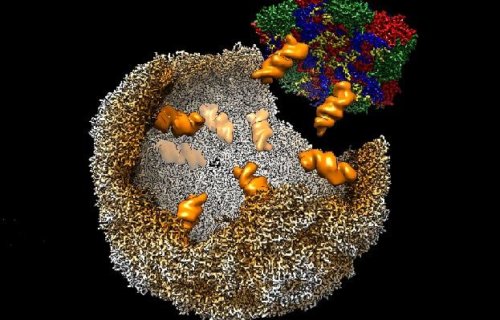LEEDS, United Kingdom — The whole world is learning just how devastating and hard to contain an infectious virus can be. Now, researchers from the University of Leeds have established for the first time ever how viruses like the common cold make themselves so infectious. The process is dependent on viruses “packing up” their genetic code, thus allowing them to enter and infect new cells.
These groundbreaking findings open the door for the development of new virus-fighting drugs or agents that could potentially stop infections before they even occur.
Tracking the viral process
Let’s start from the beginning; once a virus infects one cell, it wants to spread its genetic material to surrounding cells. This process of “viral spreading” is a complex ordeal that includes the creation of virions. These are newly-formed infectious copies of the virus. Each of these virions is a protein shell housing a full copy of the virus’s genetic code. These virions then move around, infect other cells, and ultimately spread disease.
Up until now, scientists have been puzzled as to how exactly viruses achieve the “assembly” of these new virions.
“This study is extremely important because of the way it shifts our thinking about how we can control some viral diseases. If we can disrupt the mechanism of virion formation, then there is the potential to stop an infection in its tracks,” says Professor Peter Stockley, former Director of the Astbury Centre for Structural Molecular Biology at Leeds, in a university release. “Our analysis suggests that the molecular features that control the process of virion formation are genetically conserved, meaning they do not mutate easily – reducing the risk that the virus could change and make any new drugs ineffective.”
Conducted in collaboration with the University of York, this research project brought together some of the world’s foremost experts on viral molecular structures, electron microscopy, and mathematical biology.
The key role of viral RNA
For research purposes, study authors analyzed a bovine virus, Enterovirus-E, which is harmless to humans. Scientists consider this virus the universal adopted surrogate for the poliovirus. But, it’s also worth mentioning that the common cold virus is also part of the larger enterovirus group.
Much of this study’s findings hinge on RNA packaging signals. These are short regions of the RNA molecule that bond together with proteins from the virus’s casing to facilitate the creation of infectious virions.
Via a mixture of molecular and mathematical biology, researchers successfully located possible sites on the RNA molecule that may act as packaging signals. Then, using advanced electron microscopes, the team could witness the entire viral process.
“Understanding in detail how this process works, and the fact that it appears conserved in an entire family of viral pathogens, will enable the pharmaceutical industry to develop anti-viral agents that can block these key interactions and prevent disease,” concludes Professor Reidun Twarock from York, a study co-author.
The study is published in PLOS Pathogens.
